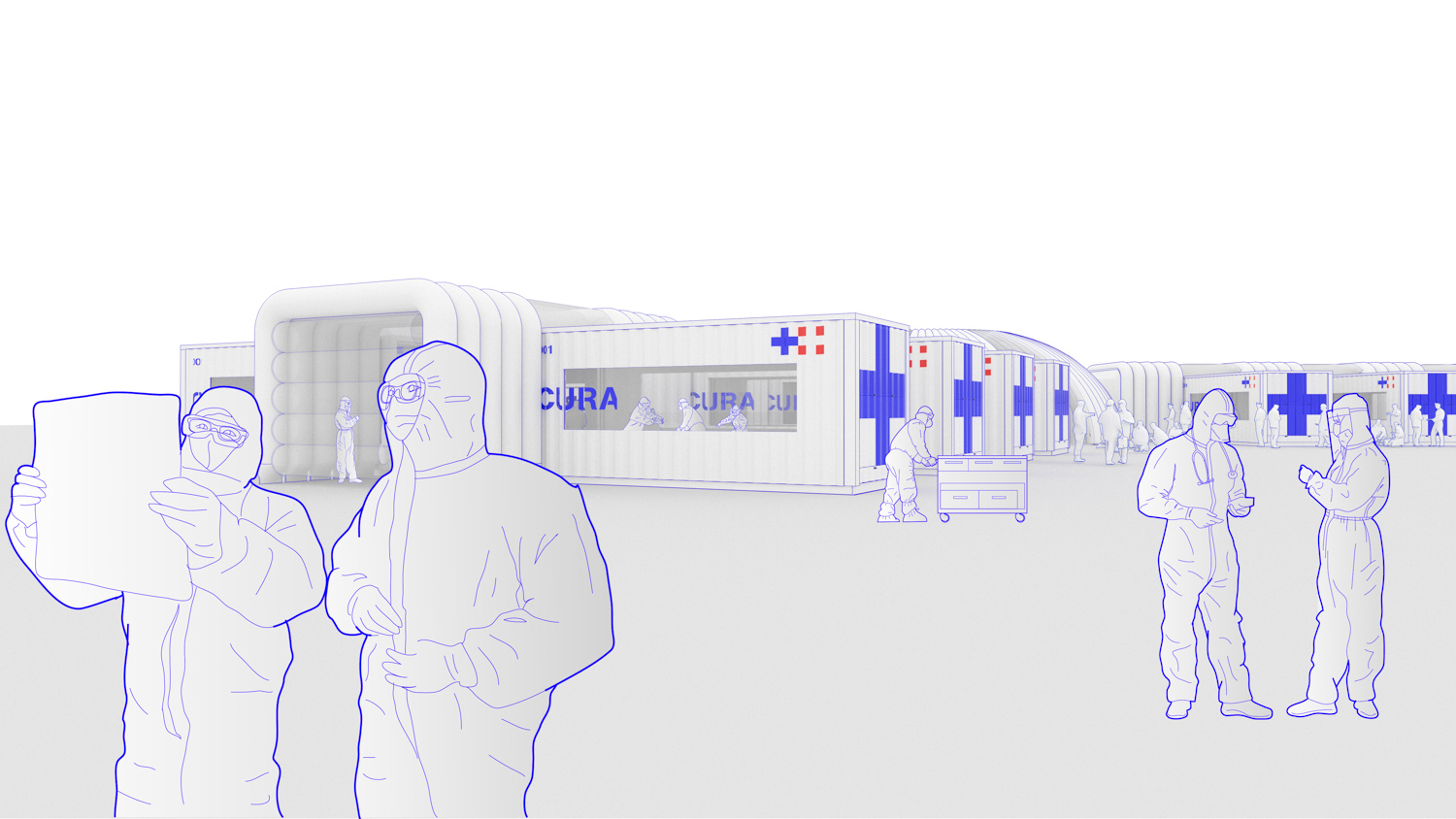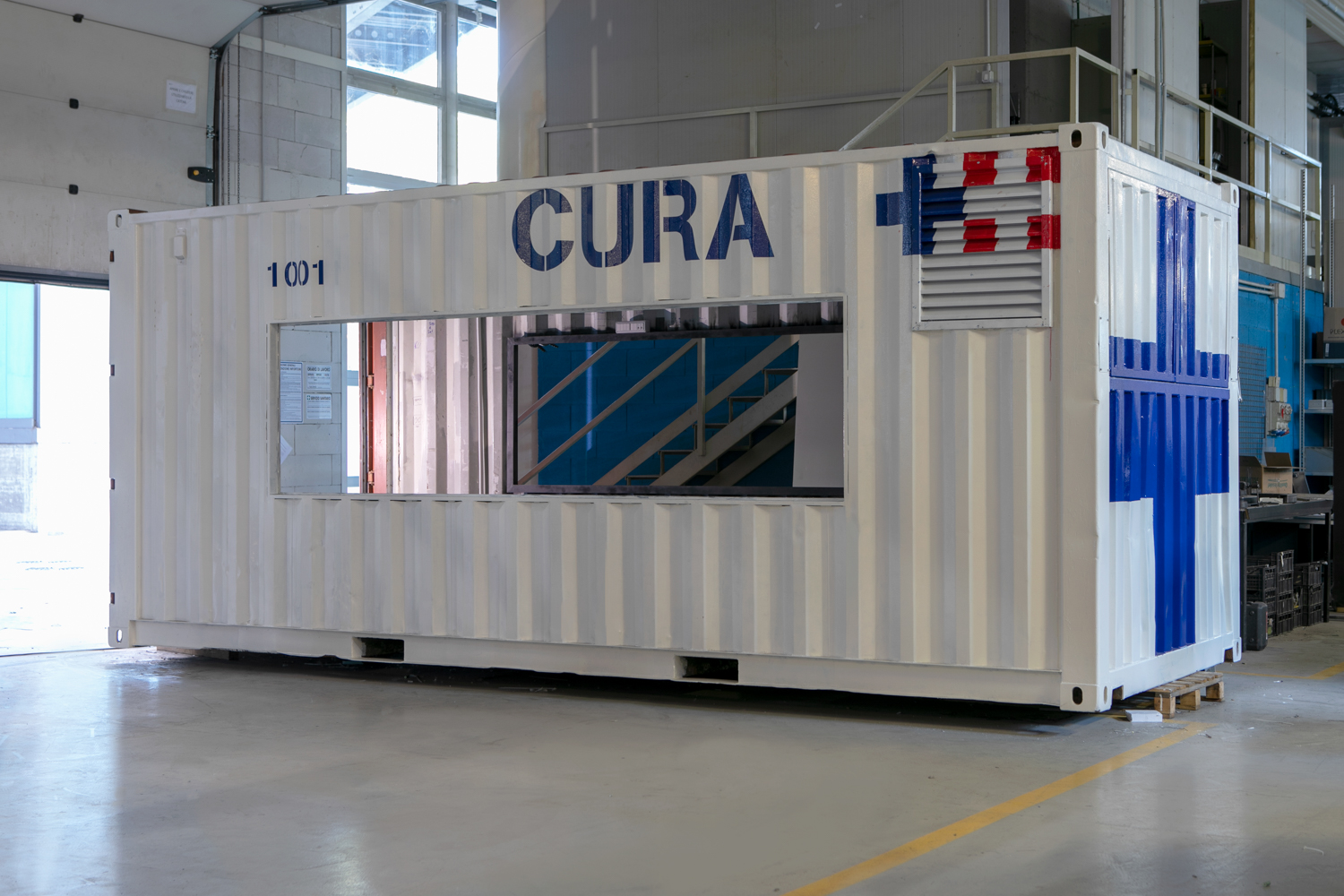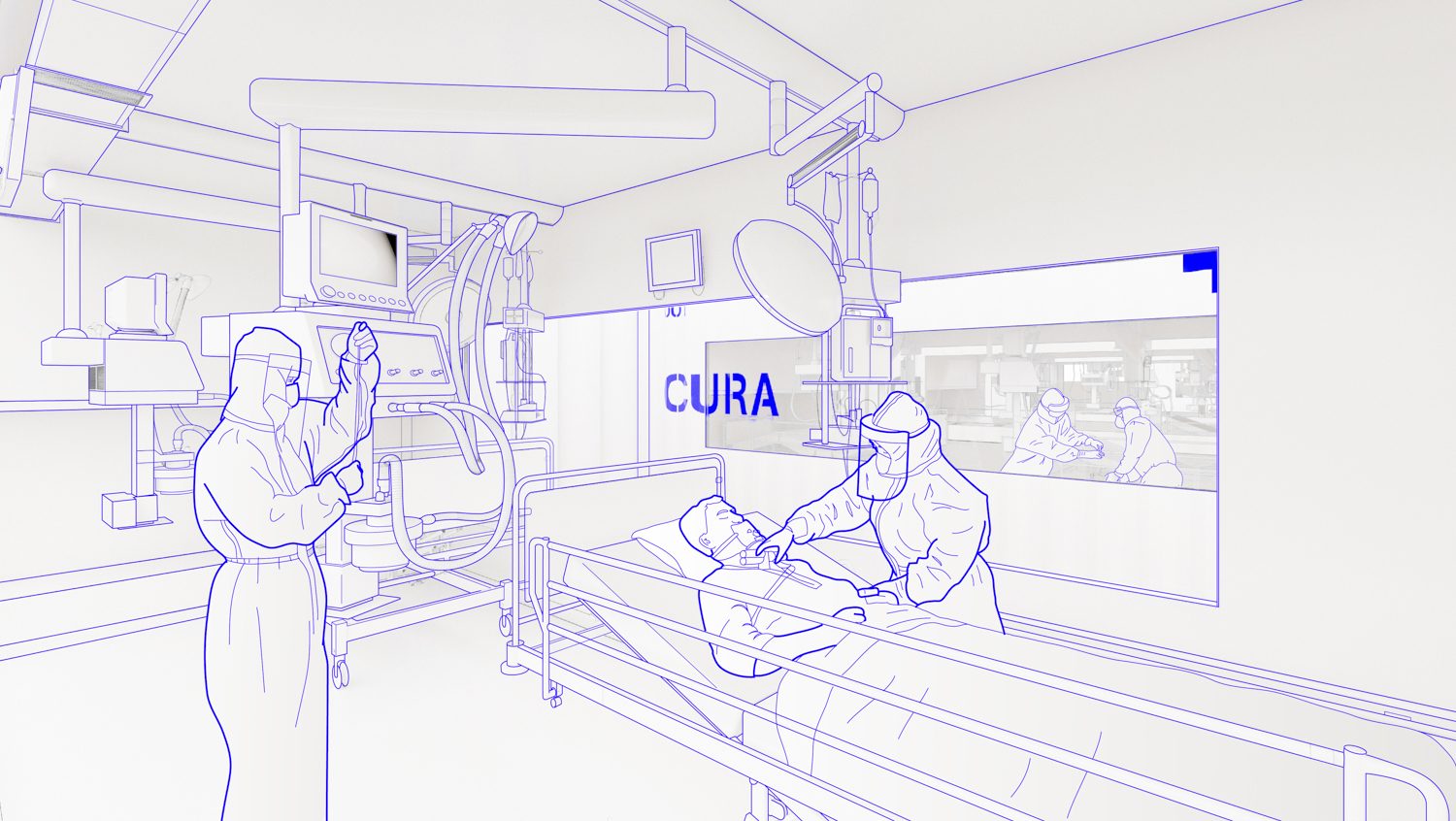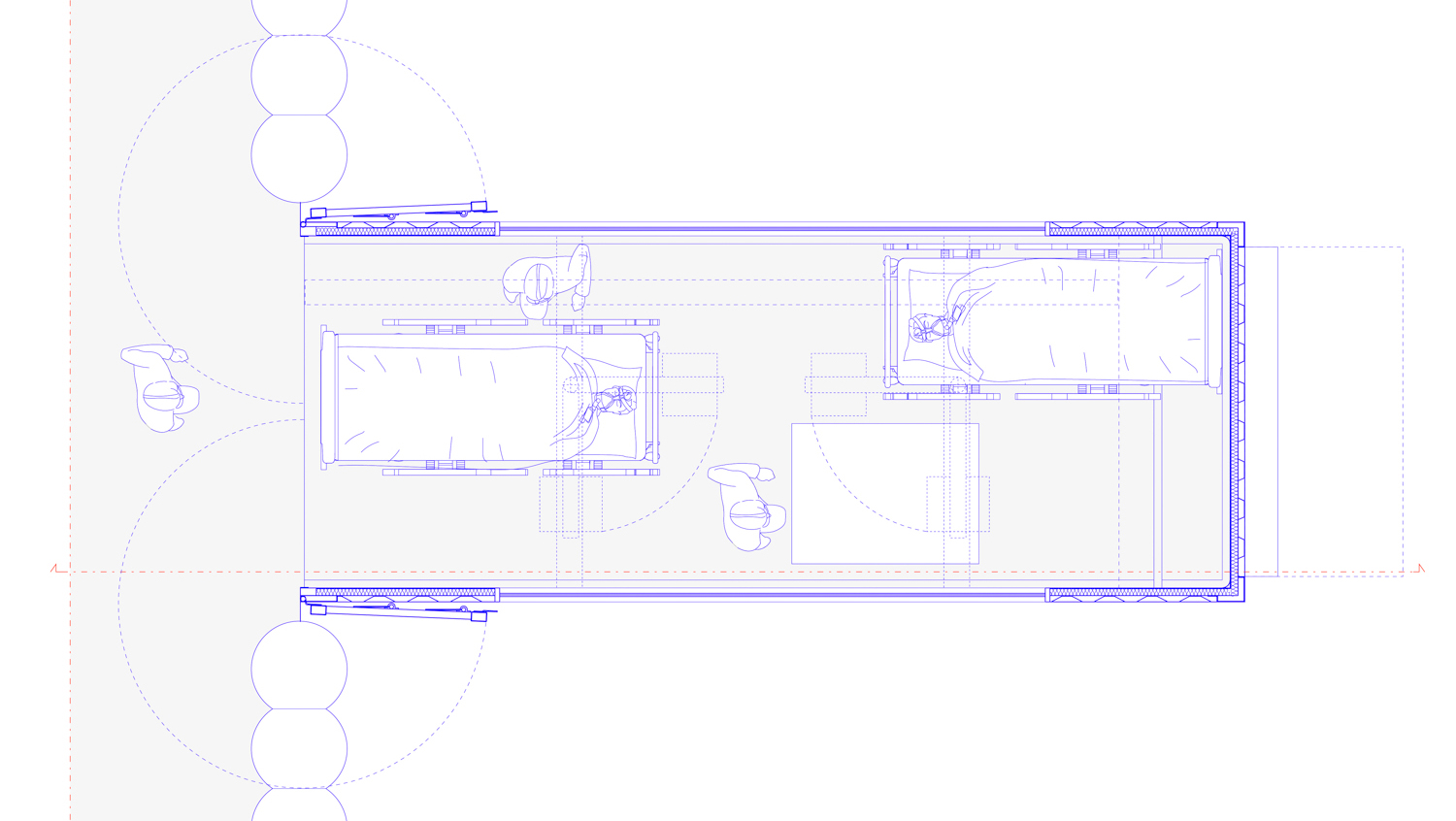APART FROM TURNING MANY BUILDINGS INTO FIELD HOSPITALS AND CREATING MOBILE HEALTHCARE UNITS, WE CAN WELCOME CURA PODS AS ANOTHER ALTERNATIVE FOR MAKESHIFT UNITS
TEXT: PAPHOP KERDSUP
PHOTO COURTESY OF CARLO RATTI ASSOCIATI / CURA PODS
(For Thai, press here)

In the past month, a large number of design works have been created in response to the COVID-19 pandemic. In addition to the face shields, protective masks and innovations for our abruptly changed lifestyles, a modular intensive-care unit (ICU) co-created by Italian architect, inventor, activist and MIT professor Carlo Ratti, his architect and designer compatriot Italo Rota with support from many organizations is another creation to watch out for.
Film by Squint/Opera
CURA (Connected Unit for Respiratory Ailments)–fittingly, “cura” also means “cure” in Latin– are intermodal shipping containers reconfigured as plug-in intensive-care pods with bio-containment through negative pressure. Significantly adding hospital ICU capacity, CURA units can be connected by germ-free inflatable corridors and either placed close to the hospital or self-standing.
With the continuously rising number of patients and casualties, Italy is one of the countries most affected by COVID-19 as the existing ICUs cannot accommodate all patients. Apart from turning many buildings into field hospitals and creating mobile healthcare units, we can welcome CURA pods as another alternative for makeshift units that are as fast to mount as tents and as safe as prefabricated wards with bio-containment. Developed as an open-source and not-for-profit design, CURA, now being tested in northern Italy, welcomes suggestions and improvements.

And if Thailand cannot flatten the curve soon and our hospital ICUs reach their limits, we may have to seriously consider this ready-to-use design solution named CURA.





